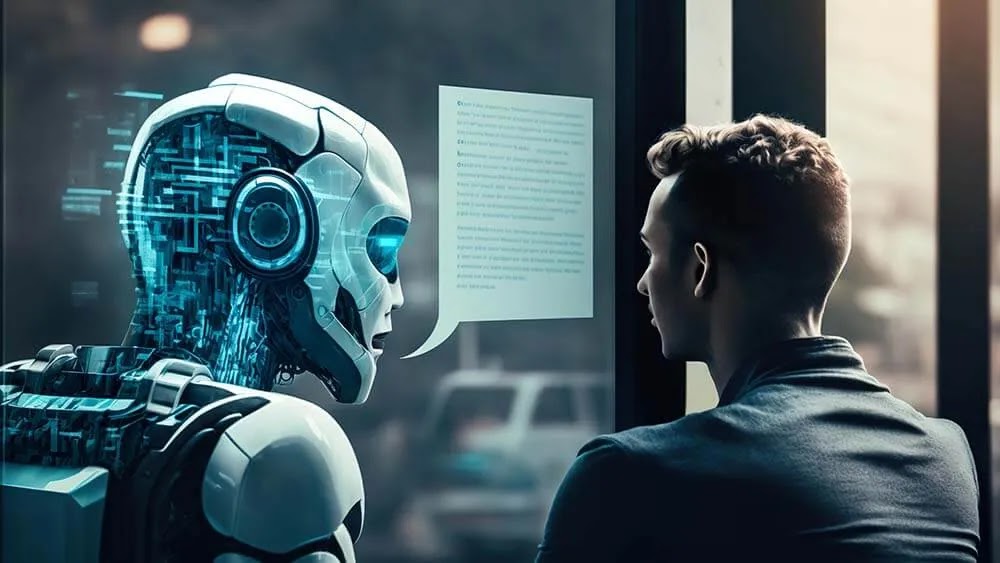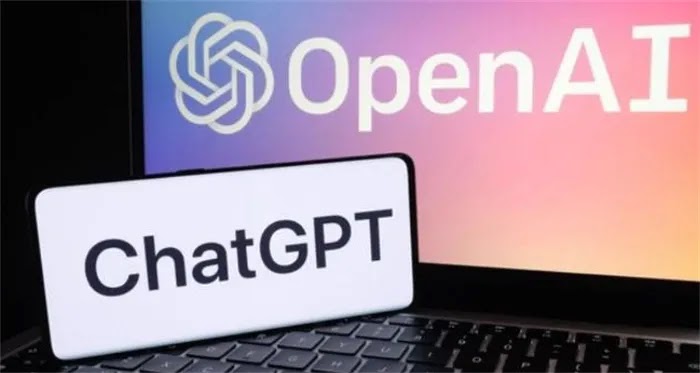Unveiling the Complexities: Are Artificial Intelligence Dangerous?
Are Artificial Intelligence Dangerous: Unveiling the Complexities
Introduction:
Artificial Intelligence (AI) has emerged as one of the most impactful technologies of the 21st century, revolutionizing various aspects of our lives. From healthcare and transportation to finance and entertainment, AI has shown immense potential to enhance efficiency and improve decision-making processes. However, as AI advances continue to push boundaries, concerns about the potential dangers associated with this technology have also surfaced. This article aims to explore the complexities surrounding the question: "Are artificial intelligence dangerous?"
Understanding Artificial Intelligence
Before delving into the potential dangers of AI, it is crucial to understand what artificial intelligence truly entails. AI refers to computer systems designed to mimic human intelligence and perform tasks that typically require human intelligence, such as visual perception, speech recognition, and decision-making. AI systems rely on vast amounts of data, sophisticated algorithms, and machine learning techniques to learn from patterns, make predictions, and improve their performance over time.
The Benefits of Artificial Intelligence
AI has already demonstrated numerous benefits across various industries. In healthcare, AI algorithms can analyze medical data to detect diseases, assist in diagnosis, and suggest personalized treatment plans. In transportation, AI is being used to develop self-driving cars, which hold the potential to reduce accidents caused by human error. Additionally, in finance, AI algorithms can analyze massive amounts of data to detect fraudulent activities and make more accurate investment decisions.
The Potential Dangers of Artificial Intelligence
While AI offers immense potential, it is essential to acknowledge and address the potential dangers associated with its development and deployment. Here are some key concerns:
1. Bias and Discrimination: AI systems are only as good as the data they are trained on. If the training data is biased or reflects societal prejudices, AI systems can inadvertently perpetuate and amplify those biases. This can result in discriminatory outcomes, such as biased hiring practices or unfair criminal justice decisions.
2. Job Displacement: The rise of AI and automation has raised concerns about job displacement. As AI systems become more sophisticated, they can potentially replace human workers in various industries, leading to unemployment and economic inequality. However, it is worth noting that AI can also create new job opportunities and enhance productivity in certain sectors.
3. Security Risks: AI systems can be vulnerable to malicious attacks. Hackers can exploit vulnerabilities in AI algorithms, leading to compromised systems and potential security breaches. Additionally, the use of AI in warfare and autonomous weapons raises ethical concerns regarding the potential for AI-driven warfare and the lack of human control in critical decision-making processes.
4. Lack of Accountability: As AI becomes more autonomous and makes increasingly complex decisions, it becomes challenging to attribute responsibility for errors or unintended consequences. The lack of accountability and transparency in AI decision-making can be problematic, especially in sectors like healthcare and autonomous vehicles, where human lives are at stake.
Addressing the Dangers of AI
To mitigate the potential dangers associated with AI, several measures can be taken:
1. Ethical AI Development: AI developers and researchers should prioritize ethical considerations throughout the development process. This includes ensuring fairness, transparency, accountability, and addressing biases in data and algorithms.
2. Regulation and Governance: Governments and regulatory bodies should establish clear guidelines and frameworks for the responsible development and use of AI. These regulations should cover areas such as data privacy, bias mitigation, and algorithmic transparency.
3. Collaboration and Interdisciplinary Research: Encouraging collaboration between AI experts, ethicists, policymakers, and other stakeholders can help identify and address the potential dangers of AI comprehensively. Interdisciplinary research can provide valuable insights into the ethical, social, and economic implications of AI, leading to more informed decision-making.
4. Transparency and Explainability: AI systems should be designed to provide explanations for their decisions and actions. This can help build trust and understanding, enabling humans to comprehend and potentially challenge AI decisions when necessary.
5. Continuous Monitoring and Auditing: Regular monitoring and auditing of AI systems can help identify and rectify potential biases, errors, or security vulnerabilities. Implementing robust mechanisms for ongoing evaluation and improvement is crucial to ensure the responsible and safe use of AI.
6. Education and Workforce Reskilling: As AI technology advances, it is essential to invest in education and reskilling programs to equip individuals with the skills needed to adapt to the evolving job market. This can help mitigate the negative impact of job displacement and ensure a smooth transition.
Furthermore, it is important to approach the question of AI dangers with a balanced perspective. While there are valid concerns and risks associated with AI, it is essential to recognize that the responsibility lies with humans, the creators and users of AI, to ensure its safe and responsible deployment.
AI systems are not inherently dangerous or malevolent. They are tools that are designed and programmed by humans. The dangers associated with AI often arise from improper use, lack of ethical considerations, or inadequate oversight. It is the responsibility of developers, policymakers, and society as a whole to guide the development and deployment of AI in a manner that aligns with ethical principles and safeguards against potential risks.
Moreover, it is worth noting that AI technology has the potential to address some of the dangers we face as a society. For instance, AI can help in detecting and preventing cyberattacks, identify patterns in large datasets to combat fraud and financial crimes, and even assist in predicting and mitigating the impacts of natural disasters. The key lies in leveraging AI for the benefit of humanity while ensuring proper safeguards are in place.
Another aspect to consider is that AI technology is rapidly advancing, and there are ongoing efforts to address the potential dangers associated with it. Researchers, policymakers, and organizations are actively working on developing frameworks, guidelines, and regulations to mitigate risks and promote responsible AI development. As we continue to learn more about the potential dangers, we can adapt and refine our approaches to ensure that AI technologies are developed and deployed in a manner that aligns with human values and societal well-being.
FAQ: Are Artificial Intelligence Dangerous?
Q1: What is Artificial Intelligence (AI)?
Artificial Intelligence refers to the development of computer systems that can perform tasks that typically require human intelligence. These systems are designed to analyze data, recognize patterns, make decisions, and even learn from experience.
Q2: Can Artificial Intelligence be dangerous?
While AI itself is not inherently dangerous, there are potential risks associated with its development and deployment. The degree of danger largely depends on how AI is designed, implemented, and used.
Q3: What are the potential dangers of AI?
There are several potential dangers of AI, including:
1. Job displacement: AI and automation have the potential to replace certain job roles, leading to unemployment or a significant shift in the job market.
2. Ethical concerns: AI systems can perpetuate biases, discriminate against certain groups, or invade privacy if not properly designed and regulated.
3. Lack of accountability: Autonomous AI systems may make decisions without clear accountability, which raises concerns about responsibility and liability for their actions.
4. Unintended consequences: Poorly designed or insufficiently tested AI systems could produce unintended and potentially harmful outcomes.
5. Security risks: AI systems can be vulnerable to cyberattacks, and if exploited, they may cause significant damage to critical infrastructure or compromise personal data.
Q4: Are there any examples of AI risks or accidents?
While there have been no major catastrophic events directly caused by AI, there have been instances where AI systems have made mistakes or exhibited unintended behavior. For example, biased AI algorithms have been used in criminal justice systems, resulting in unfair predictions and sentencing. Additionally, there have been cases of AI-powered chatbots spreading misinformation or exhibiting inappropriate behavior due to inadequate training data.
Q5: What measures are being taken to address AI dangers?
To mitigate the risks associated with AI, various measures are being taken:
1. Ethical frameworks: Organizations and researchers are developing ethical guidelines and principles for the responsible design, development, and use of AI systems.
2. Regulatory efforts: Governments are working on implementing regulations to ensure transparency, fairness, and accountability in AI applications.
3. Bias detection and mitigation: Researchers are developing techniques to identify and address biases in AI systems to ensure fairness and inclusivity.
4. Explainability and interpretability: Efforts are being made to make AI systems more transparent, enabling users to understand the decision-making process and detect potential errors or biases.
5. Collaboration and interdisciplinary research: Experts from various fields, including computer science, ethics, law, and sociology, are collaborating to address the challenges and risks associated with AI.
Q6: How can individuals contribute to AI safety?
Individuals can contribute to AI safety in several ways:
1. Education and awareness: Stay informed about AI developments, risks, and ethical considerations. Promote public discussions and awareness of AI-related issues.
2. Advocate for transparency: Encourage organizations to be transparent about their AI systems, ensuring that their decision-making processes are explainable and accountable.
3. Support research and regulation: Advocate for funding and research in AI safety. Support the development of regulations that promote responsible AI use.
4. Promote diversity and inclusivity: Encourage the involvement of diverse perspectives and ensure inclusivity in AI development to mitigate biases and discrimination.
Q7: Should we be afraid of a potential AI apocalypse as portrayed in movies?
The idea of an AI apocalypse, as depicted in movies, is largely speculative and exaggerated for dramatic effect. While it is essential to consider potential risks, it is unlikely that AI will spontaneously gain consciousness or become malevolent on its own. The development and deployment of AI technologies are subject to human control and oversight, which can help prevent such scenarios.
Q8: How can we ensure the safe and responsible development of AI?
To ensure the safe and responsible development of AI, several key principles and practices should be followed:
1. Ethics by design: Incorporate ethical considerations into the design and development process of AI systems, ensuring fairness, transparency, and accountability.
2. Data quality and bias mitigation: Use high-quality and diverse datasets, and employ methods to detect and mitigate biases in AI algorithms.
3. Human oversight and control: Maintain human decision-making authority and oversight over AI systems, especially in critical domains such as healthcare, finance, and security.
4. Robust testing and validation: Thoroughly test AI systems to identify and address potential errors, biases, and unintended consequences before deployment.
5. Continual monitoring and updating: Regularly monitor AI systems in real-world applications, collect feedback, and update them to improve their performance and address emerging risks.
6. Collaboration and interdisciplinary approaches: Foster collaboration among researchers, policymakers, ethicists, and stakeholders to develop comprehensive guidelines and regulations for AI development and deployment.
Q9: Who is responsible for AI safety?
AI safety is a collective responsibility shared among researchers, developers, policymakers, and society as a whole. Developers and researchers have a responsibility to design and build AI systems with safety and ethical considerations in mind. Policymakers play a crucial role in establishing regulations and frameworks to ensure responsible AI use. Society must actively engage in discussions, raise awareness, and hold organizations accountable for the safe and ethical deployment of AI technologies.
Q10: Is there ongoing research to address AI safety concerns?
Yes, there is ongoing research and development in the field of AI safety. Researchers are actively working on developing techniques to improve the transparency, fairness, interpretability, and robustness of AI systems. Additionally, interdisciplinary collaborations are taking place to address the ethical, legal, and societal implications of AI. The goal is to ensure that AI technologies are developed and deployed in a manner that maximizes benefits while minimizing risks.
It's important to remember that while there are potential risks associated with AI, there are also numerous benefits and opportunities that AI can bring. By addressing the risks and taking appropriate precautions, we can harness the potential of AI for the betterment of society.
Conclusion:
Artificial intelligence undoubtedly holds immense potential to transform society positively. However, it is crucial to address the potential dangers associated with AI's development and deployment. The risks of bias, job displacement, security vulnerabilities, and lack of accountability require careful consideration and proactive measures. By prioritizing ethical development, implementing regulations, fostering collaboration, ensuring transparency, and investing in education, we can navigate the complexities of AI and harness its potential while minimizing the risks. Responsible and ethical AI deployment is key to reaping the benefits of this transformative technology without compromising the safety, fairness, and well-being of individuals and society as a whole.







